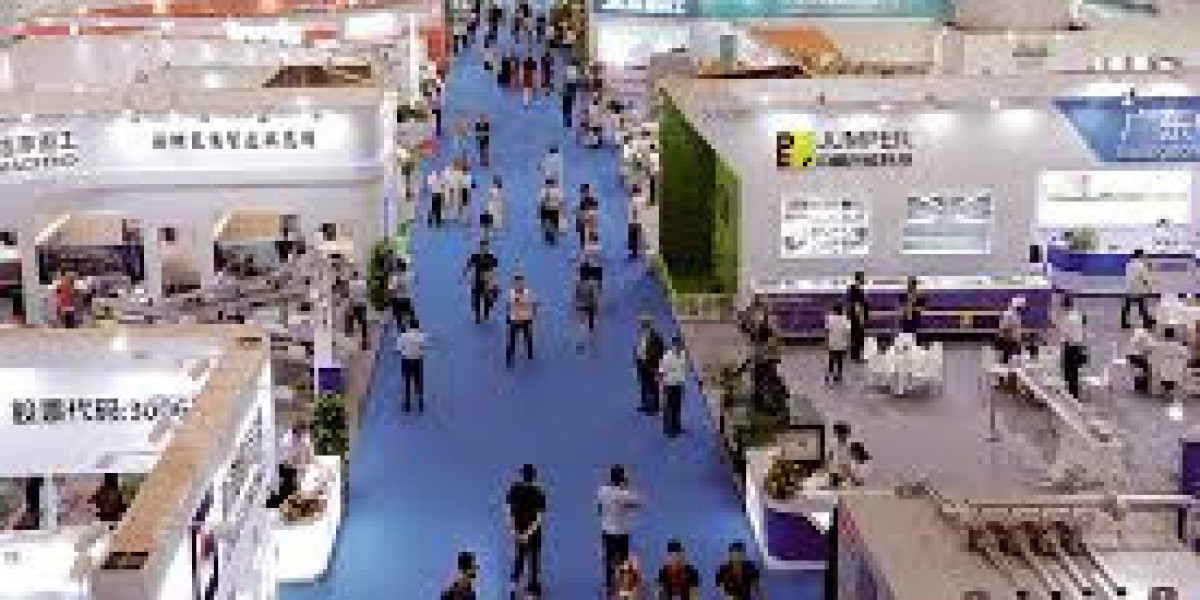Exhibiting at trade shows in China offers businesses a unique opportunity to tap into one of the world’s largest and most dynamic markets. A China Exhibition can serve as a powerful platform for showcasing products, building brand awareness, and forging valuable business connections. However, succeeding in this vibrant yet complex environment requires careful planning, cultural understanding, and strategic execution.
Understanding the Chinese Market
Before diving into the logistics of exhibiting, it’s essential to grasp the nuances of the Chinese market. China’s business landscape is driven by rapid economic growth, a burgeoning middle class, and a strong appetite for innovation. Trade shows in China, such as the China International Import Expo (CIIE) or the Canton Fair, attract millions of attendees, from local buyers to international distributors. These events are not just about displaying products but also about building trust and relationships, which are central to Chinese business culture.
Researching the target audience is a critical first step. Understand the demographics, preferences, and purchasing behaviors of the attendees likely to visit the trade show. For instance, urban consumers in cities like Shanghai or Beijing may prioritize premium, tech-driven products, while buyers from smaller cities might focus on cost-effectiveness. Tailoring your offerings to these preferences can set your booth apart.
Choosing the Right Trade Show
Not all trade shows in China are created equal. Selecting the right China Exhibition depends on your industry, goals, and target audience. Major events like the Canton Fair (China Import and Export Fair) are ideal for a broad range of industries, from electronics to textiles. Specialized shows, such as the China International Industry Fair (CIIF) or the Shanghai International Auto Show, cater to specific sectors. Research the event’s history, attendee profiles, and exhibitor feedback to ensure it aligns with your objectives.
Consider the location of the trade show as well. Cities like Shanghai, Beijing, and Guangzhou host the largest exhibitions, offering access to international and domestic buyers. However, smaller cities like Shenzhen or Chengdu are gaining prominence for niche industries like technology and manufacturing. Factor in logistical aspects, such as transportation and accommodation costs, when making your decision.
Pre-Show Planning and Preparation
Success at a China Exhibition hinges on meticulous preparation. Start by setting clear objectives: Are you aiming to generate leads, launch a new product, or build brand awareness? These goals will shape your booth design, marketing materials, and staffing choices.
Booth Design and Setup
Your booth is your brand’s physical representation, so invest in a professional and culturally resonant design. Chinese attendees value visually appealing and interactive displays. Incorporate elements like digital screens, product demonstrations, or augmented reality experiences to engage visitors. Ensure your booth reflects your brand identity while adhering to local aesthetics—bright colors and clear signage tend to attract attention.
Work with a local booth contractor familiar with the venue’s regulations and cultural preferences. Many Chinese trade shows have strict guidelines on booth construction, so confirm these details in advance to avoid last-minute issues. Additionally, consider bilingual signage in Mandarin and English to cater to diverse attendees.
Marketing and Promotion
Promoting your participation in a China Exhibition is crucial for driving booth traffic. Leverage Chinese social media platforms like WeChat and Weibo to announce your presence and share teasers about your products. Create a dedicated event page or QR code linking to your company’s profile or product catalog. Email campaigns targeting existing clients or prospects in China can also boost attendance.
Collaborate with local influencers or industry associations to amplify your reach. Many Chinese trade shows offer promotional opportunities, such as sponsored sessions or advertisements in event directories—take advantage of these to enhance visibility.
Staffing and Training
Your booth staff are the face of your brand. Hire bilingual team members fluent in Mandarin and knowledgeable about your products. Cultural sensitivity is key; train your staff on Chinese business etiquette, such as exchanging business cards with both hands and addressing attendees respectfully. If possible, include local staff or interpreters to bridge language and cultural gaps.
Navigating Cultural Nuances
Understanding Chinese business culture is critical to making a positive impression at a China Exhibition. Relationship-building, or guanxi, is a cornerstone of business in China. Take time to engage with visitors, answer questions patiently, and show genuine interest in their needs. Small gestures, like offering tea or branded giveaways, can leave a lasting impression.
Avoid aggressive sales tactics, as they may be perceived as off-putting. Instead, focus on educating attendees about your products and their value. Be prepared for negotiations, as Chinese buyers often expect discounts or customized solutions. Patience and flexibility are essential in these discussions.
Logistics and Compliance
Navigating the logistical and regulatory landscape of a China Exhibition can be challenging for first-time exhibitors. Work with a local event organizer or freight forwarder to handle customs clearance, shipping, and storage of exhibition materials. China has strict import regulations, so ensure all products comply with local standards, especially for electronics, food, or medical devices.
Obtain necessary permits or certifications well in advance. For example, products displayed at the CIIE may require registration with Chinese authorities. Double-check visa requirements for your team, as processing times can vary. Partnering with a local agent can streamline these processes and prevent costly delays.
Engaging Attendees During the Show
Once the trade show begins, your focus should shift to engaging attendees effectively. Offer live demonstrations or hands-on experiences to showcase your product’s value. For example, if you’re exhibiting tech gadgets, let visitors test them. If you’re in the food industry, provide samples to attract interest.
Collect contact information systematically. Many Chinese attendees prefer sharing details via WeChat, so have a QR code ready for quick connections. Follow up promptly after initial interactions to maintain momentum. Avoid overwhelming visitors with too much information—keep your pitch concise and tailored to their needs.
Post-Show Follow-Up
The work doesn’t end when the China Exhibition closes. A robust follow-up strategy is essential to convert leads into customers. Within a week, send personalized emails or WeChat messages to contacts you met, referencing specific conversations to jog their memory. Share additional product information or invite them to virtual demos.
Track your return on investment (ROI) by monitoring metrics like leads generated, deals closed, or brand impressions. Analyze what worked and what didn’t to refine your approach for future trade shows. Building long-term relationships with Chinese partners may take time, so stay consistent in your communication.
Leveraging Technology and Trends
China’s trade show landscape is increasingly tech-driven. Many exhibitions now offer virtual or hybrid formats, allowing you to reach attendees beyond the physical event. Consider integrating digital tools like live streaming or virtual reality to showcase your products to remote audiences. These technologies resonate with China’s tech-savvy consumers and can extend your reach.
Sustainability is another growing trend at Chinese trade shows. Highlight eco-friendly products or practices to appeal to environmentally conscious buyers. For instance, showcasing recyclable packaging or energy-efficient technology can differentiate your brand.
Overcoming Common Challenges
Exhibiting in China comes with challenges, such as language barriers, cultural misunderstandings, or logistical hiccups. To mitigate these, invest in local expertise—whether through translators, consultants, or event organizers. Be prepared for intense competition, as Chinese trade shows attract global players. Differentiate your booth with unique value propositions and high-quality presentations.
Budgeting is another critical aspect. Exhibiting in China can be expensive, with costs for booth rental, travel, and marketing adding up quickly. Plan your budget meticulously and allocate funds for unexpected expenses, such as last-minute shipping fees.
Conclusion
Exhibiting at a China Exhibition can be a game-changer for businesses looking to expand in one of the world’s most lucrative markets. By understanding the market, choosing the right trade show, planning meticulously, and navigating cultural and logistical nuances, you can maximize your impact. Engage attendees with compelling displays, follow up diligently, and leverage technology to stay ahead of the curve. With the right strategy, your participation in a China Exhibition can open doors to new opportunities, partnerships, and growth in this dynamic market.



